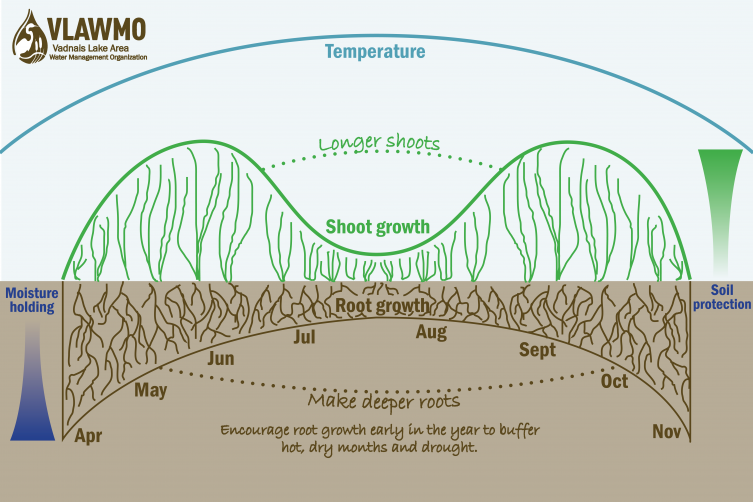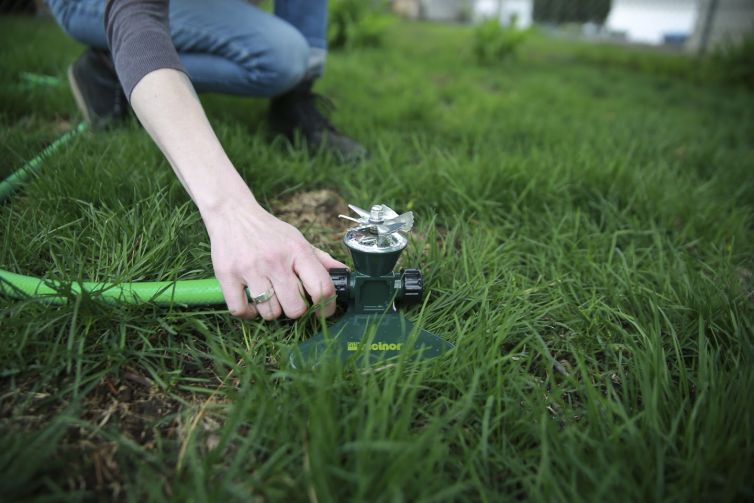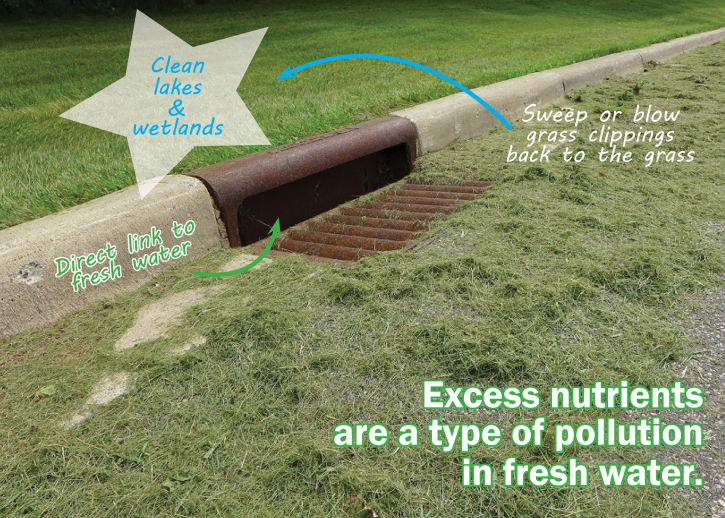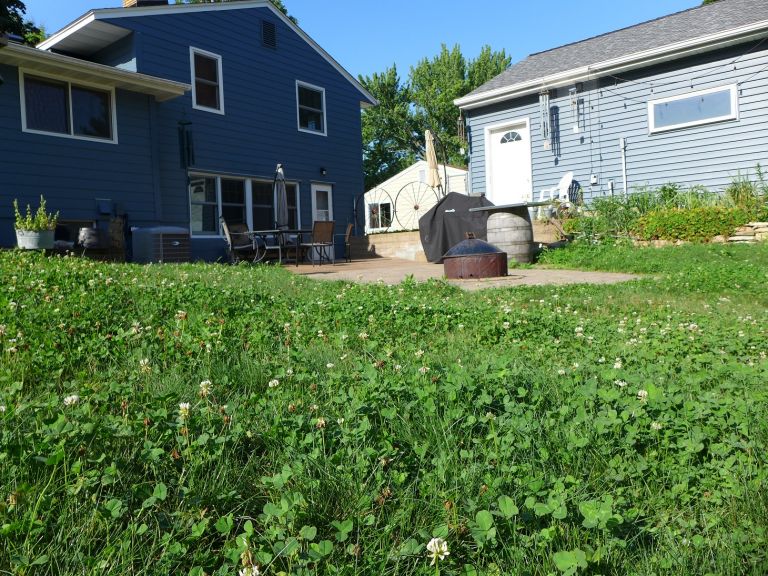Spring Yard Care for Water Conservation
Can you hear the mower mowin’?
While this spring feels like it’s been drawn out into one mega-season, June is still one of the biggest months for plant growth and a key time to be workin’ on the yard care. Whether or not you’re one to rise up early in the morn’, now’s still a great time to set-up some water-minded yard habits that can last for the rest of the year. Our lawns can take a heavy toll on municipal water resources, but they can also support water conservation. So how will we use our community’s water all the live-long day?
Start with the basics: Mowing height
- Maintain a mowing height of 3” or more, especially early in the year. This will encourage robust root growth that will reduce the need for irrigation later in the year.
- Deeper roots have a better ability to withstand drought, retain moisture, and access nutrients when they’re needed most (especially in hot, dry months).
- Taller grass also shades out weed seeds and keeps soil cooler. This is great for soil health and urban heat island effect.
- When short turf hardens due to sun exposure, a hard crust can form on the soil surface. This creates an ongoing struggle for turf, as the crust will resist water when wet conditions return, requiring even more maintenance, re-seeding, and higher water use to repair the lawn. Thankfully, this can be prevented with higher mowing heights.

Irrigation: Don’t just pass the time away
- “Set it and forget it” is not a water-friendly method. If you have an irrigation system, consider updating to a smart irrigation that adjusts watering according to rainfall.
- Conventional turf only needs about 1” of water per week. Try using a paper cup to estimate water depth from a sprinkler, or a rain gauge to keep track of precipitation.

Bee Lawns and Lo-Mow: Strummin’ on a new banjo
- For adventurous types, turf conversion could be just the ticket for a change-up. Bee lawns are naturally deep rooted and more resilient than conventional turf. True to the name, they help support pollinators.
- Bee lawns need not include the infamous dandelion. Many utilize other low-growing flowering plants such as white clover and creeping thyme (not to be confused with creeping Charlie).
- Lo and no-mow turfs often use tall or hard fescue varieties as the dominant grass type. Whether it’s lo or no-mow depends on preference and management style – some mow once per year to keep seed heads down, and others who don’t mind seed heads may not mow at all. This type of grass lays over to create a “tuft” or a “Dr. Seuss” aesthetic, which many find to be a pleasant texture on the yard. They’re great options for light foot traffic and part shade settings.
Other tips:
- Avoid “weed and feed” lawn treatments, as these don’t apply herbicide or fertilizer in ways specific to what the lawn needs. This leads to excess product in the form of wasted nutrients and a higher risk of exposure to pollinators. The best practice is to apply treatments according to a soil test, and to err on spot treatment rather than blanket treatment.
- Grass clippings are full of nutrients. On soil this is great, but in water these excess nutrients become a type of pollution. Keep grass clippings off of pavement and always sweep or blow them back up to the lawn. This keeps valuable nutrients in your soil instead of losing them and needing to replace them with a treatment later on.
- Periodically change the direction of your mowing to promote upright shoot growth. This also helps reduce soil compaction, which helps the soil take in air and water

Links:
- If working with contractors, consider hiring a contractor certified in Turf Maintenance Best Practices through the Minnesota Pollution Control Agency.
- Check out VLAWMO’s water stewardship at home page for more tips and resources on yard care and yard waste disposal.
- Check out the U of M Extension’s Mowing Practices for Healthy Lawns” page for more tips and specifics.
- Check out VLAWMO’s soil health grant for potential funding to install bee lawns, alternative turf, raingardens, and even rain barrels.
- Apply for a Lawns to Legumes grant for support in installing a pocket prairie, pollinator lawn, pollinator meadow, or targeted trees and shrubs.
New yard routines take time and teamwork, kind of like a railroad. We hope you’ll join us as we learn together and try new things with our local water resources in mind. Next time you find yourself doing yard work humming “fee-fie-fiddle-e-i-o deeper roo-oots” (don’t we all?), be inspired that even a small yard adjustment can make a big difference for the watershed.


